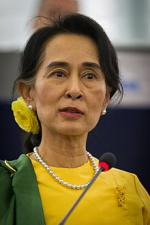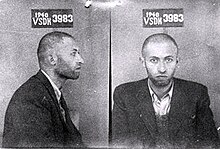France[edit]
On September 24, 1978, according to a meeting held in
New York City between Iraqi and Iranian foreign minister,
[38] Khomeini was forced by Iraqi strongman
Saddam Hussein to leave Najaf, although the Shah and Hussein had begun plans to expel Khomeini as early as 1975.
[39] Khomeini preferred to go to another Muslim country, and obtained
a visa for
Kuwait,
[40] but was turned back at the
border because he had obtained the visa under the name “Ruhollah Mustafavi”.
[41] Khomeini's next preference was to go to
Syria – where some sources say he had intended to permanently reside even when he attempted to enter
Kuwait[42] – but the lingering influence of
Ahmed Hassan al-Bakr in Iraqi and Syrian politics meant that
Syrian government would not accept him.
[43] Khomeini then considered going to
Bahrain,
India,
Pakistan or
Algeria,
[40] but his
US-educated nationalist aide,
Ebrahim Yazdi, argued that Khomeini should move to
the West because of the greater communication opportunities offered there, with
Paris offering the best option for communication with the world of his revolutionary message.
[44]
On October 11, 1978, after Khomeini was moved to
Neauphle-le-Château outside
Paris, France. From the advantages this decision was to keep faraway clerics and Ulama.
[45] Citiation in
France such as some communication facilities and political atmosphere make more efficient relation with people in Iran. In
France, because of journalists and the press, and support and approval of the
UK and the
US foreign policies and their lack of trust in Shah to support their long-term interest, Khomeini's speeches were published rapidly in global media.
[28] Khomeini wanted to people that continued protests against the government.
[46] Between August and December 1978, strikes and demonstrations paralyzed Iran, so that the Shah left the country for exile on 16 January 1979, as the last Persian monarch, leaving his duties to a regency council and an opposition-based prime minister,
Shapour Bakhtiar.

www.cp24.com









